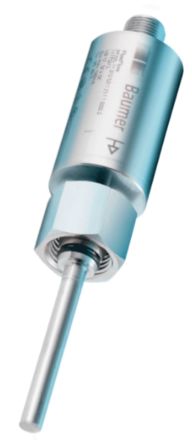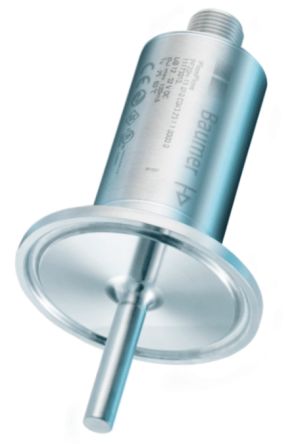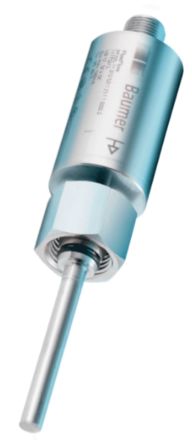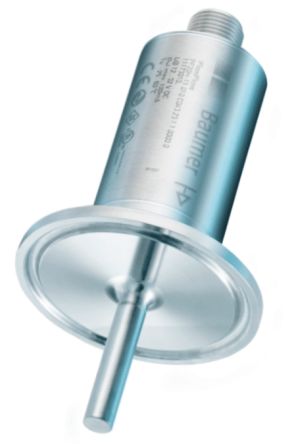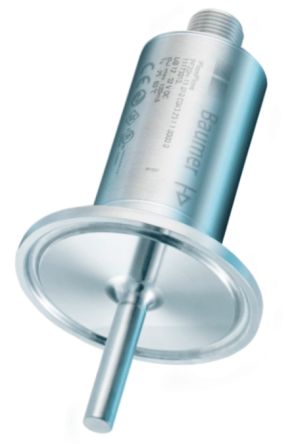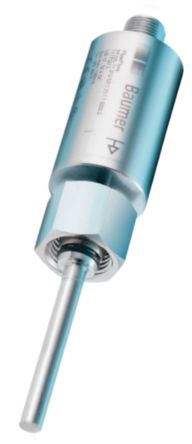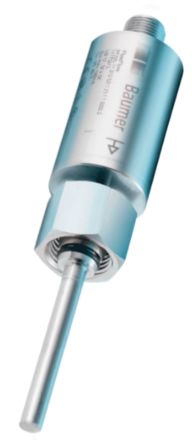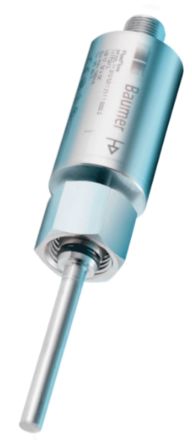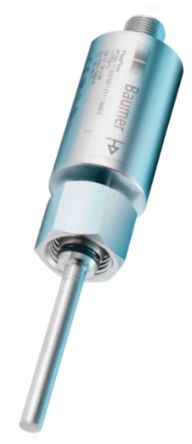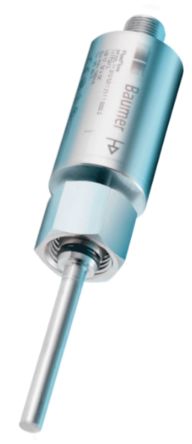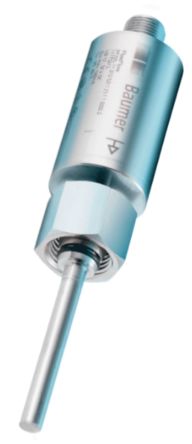- Automation & Control Gear
- Cables & Wires
- Enclosures & Server Racks
- Fuses & Circuit Breakers
- HVAC, Fans & Thermal Management
- Lighting
- Relays & Signal Conditioning
- Switches
- Batteries & Chargers
- Connectors
- Displays & Optoelectronics
- ESD Control, Cleanroom & PCB Prototyping
- Passive Components
- Power Supplies & Transformers
- Raspberry Pi, Arduino, ROCK, STEM Education & Development Tools
- Semiconductors
Baumer Flow Sensors
Flow sensors are devices that help us measure the movement of fluids, like water or air, in various applications. You may have heard of them being referred to as sensor flow, flow meter, or flow indicator. They work like fluid detectives, detecting the flow rate and volume with certain applications to provide valuable information for controlling, monitoring, and optimizing processes.
What is a Flow Sensor?
Flow sensors are specialized devices designed to measure the rate of flow of fluids, such as liquids or gases, in various systems and applications. Unlike other types of sensors that detect parameters like temperature or pressure, flow sensors specifically focus on monitoring the movement of fluids, like flow meters for water.
The basic principle behind flow measurement involves quantifying the volume of fluid passing through a specific point over a given period. This is usually achieved by detecting changes in pressure, velocity, or displacement caused by the flowing fluid. Accurate flow measurement is crucial in numerous industrial and commercial processes, where precise control and monitoring of fluid flow are essential for optimizing efficiency, ensuring product quality, and maintaining operational safety.
Flow transmitters play a key role in converting the detected flow data into electrical signals, which can then be further analyzed, displayed, or utilized for control purposes in automated systems.
Types of Flow Sensors
There are several types of flow meter devices, each with its own unique way of working.
- Differential Pressure: These sensors create a pressure drop in the fluid and measure the resulting difference. They compare the pressure upstream and downstream of an obstruction, calculating the flow rate. They're usually used in HVAC systems and industrial processes.
- Turbine Flow: Turbine sensors work like tiny windmills in the fluid stream. As the fluid flows, it spins the turbine, and the speed of rotation is proportional to the flow rate. These sensors are widely used in water utilities, irrigation systems, and even fuel consumption monitoring.
- Electromagnetic Flow: These flow rate sensors employ the power of electromagnetism to measure flow. A magnetic field is created perpendicular to the fluid's direction, and as the conductive fluid flows, it generates a voltage proportional to the velocity. They are unaffected by pressure or temperature changes and find applications in water treatment, chemical processes, and wastewater management.
- Ultrasonic Flow: Ultrasonic sensors use sound waves to detect the flow. They emit ultrasonic signals through the fluid and measure the time it takes for the waves to travel upstream and downstream. By comparing these times, they calculate the flow rate. These sensors are particularly handy for large pipes and ducts.
- Vortex Flow: Just as a whirlpool form when water flows past an obstacle, vortex flow sensors take advantage of the "twist" in the flow. They place a bluff body in the fluid stream, and the frequency of vortices formed is directly related to the flow rate. These flow rate sensors excel in measuring gas flow and find applications in HVAC, chemical plants, and even beer brewing!
Flow rate sensors are the ‘current’ stars of the measurement world, helping us formulate efficient processes, optimize resource usage, and maintain the perfect balance. With a range of abilities like digitized flow meters to track water flow rates, as well as flow meter gauges, they're certainly not "fluid" when it comes to providing valuable data.
Selecting the Right Flow Sensor
Here's a checklist that may help when choosing the right flow sensor, for both the market in the Philippines and anywhere else in the region:
- Fluid Type: Consider the properties of the fluid being measured, such as corrosiveness, conductivity, and viscosity.
- Flow Rate Range: Determine the expected range of flow rates that the sensor needs to measure accurately.
- Environmental Conditions: Take into account factors like temperature, pressure, and humidity in the operating environment.
- Installation Requirements: Assess the space available for installation, mounting options, and any special considerations for installation.
- Cost: Evaluate the initial cost of the flow sensor as well as any ongoing maintenance or calibration expenses.
Ensure that the selected flow sensor meets these criteria, while also at a price that fits within the allocated flow meter budget.
Key Applications of Flow Sensors
- Differential Pressure Flow Sensors: Vital for HVAC systems to regulate airflow in ducts and maintain indoor air quality. Also crucial in chemical manufacturing to monitor fluid flow rates, optimize production, and prevent overpressure situations.
- Turbine Flow Sensors: Operating as a water flow meter, they’re essential for water utilities to measure consumption accurately, detect leaks, and enhance system reliability. They’re also used in automotive applications to monitor fuel consumption and promote fuel-efficient driving practices.
- Electromagnetic Flow Sensors: Critical for wastewater treatment plants to measure sewage flow rates, optimize treatment processes, and ensure compliance with environmental regulations. Also employed in the food and beverage industry for precise ingredient measurements and improved product quality.
- Ultrasonic Flow Sensors: Widely used in oil and gas industries to monitor fluid flow in pipelines, detect leaks, and optimize operational efficiency. Also utilized in building automation systems to monitor water and energy usage for sustainability and cost savings.
- Vortex Flow Sensors: Essential in chemical processing plants to monitor gas and liquid flow, ensure accurate ingredient proportions, and prevent equipment damage. Also employed in pharmaceutical manufacturing to maintain sterile conditions and comply with regulatory standards for product safety and quality.
Common Challenges with Flow Sensors
Common challenges with flow sensors include:
- Sensor Fouling: Accumulation of debris, sediment, or biological material on sensor surfaces can obstruct flow readings and reduce accuracy over time. Regular cleaning or implementing protective measures can mitigate this issue.
- Calibration Drift: Over time, flow sensors may experience changes in calibration due to factors like wear and tear, environmental conditions, or sensor aging. Regular calibration checks and adjustments are necessary to maintain accuracy.
- Interference from External Factors: External factors such as electromagnetic interference, vibration, or temperature fluctuations can affect sensor performance and accuracy. Shielding, proper installation techniques, and environmental controls can help minimize these effects.
Range of Flow Sensors at RS Philippines
Are you seeking reliable flow sensors in the Philippines? Look no further than RS Philippines! We provide a wide range of options to suit various requirements, from industrial to residential applications. Explore our wide selection of flow sensors and digital flow meters today or contact us if you have any enquiries.
